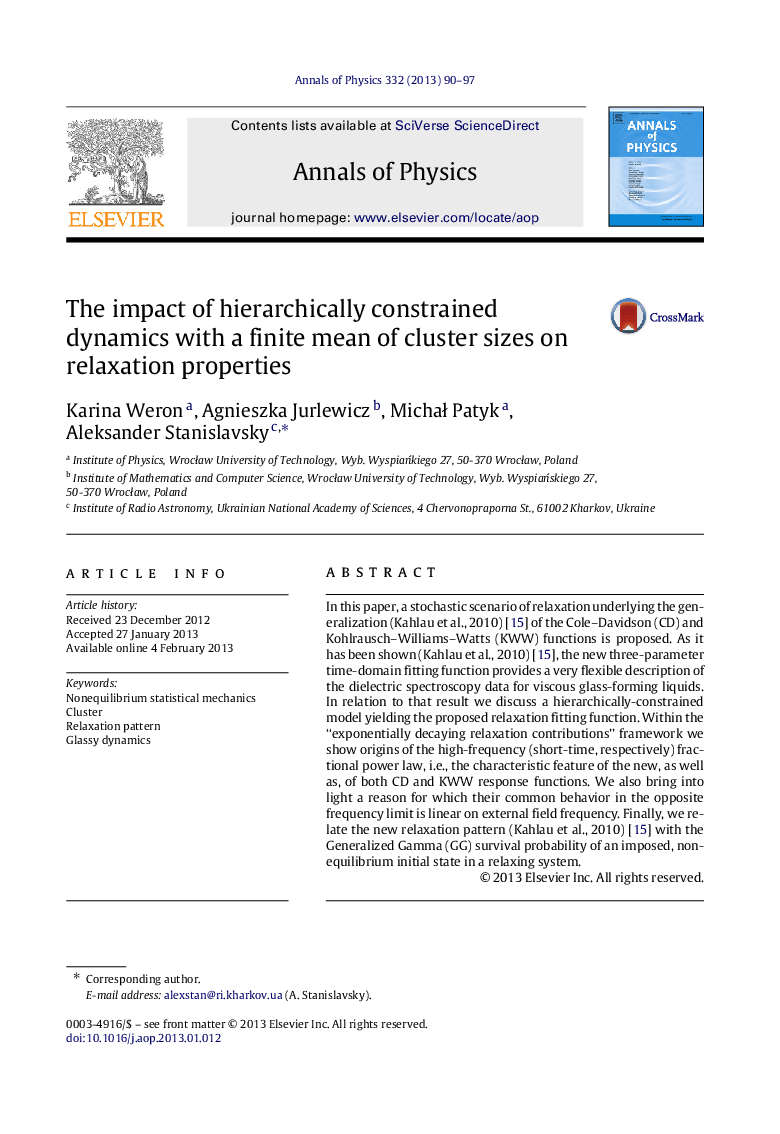| Article ID | Journal | Published Year | Pages | File Type |
|---|---|---|---|---|
| 1855028 | Annals of Physics | 2012 | 8 Pages |
In this paper, a stochastic scenario of relaxation underlying the generalization (Kahlau et al., 2010) [15] of the Cole–Davidson (CD) and Kohlrausch–Williams–Watts (KWW) functions is proposed. As it has been shown (Kahlau et al., 2010) [15], the new three-parameter time-domain fitting function provides a very flexible description of the dielectric spectroscopy data for viscous glass-forming liquids. In relation to that result we discuss a hierarchically-constrained model yielding the proposed relaxation fitting function. Within the “exponentially decaying relaxation contributions” framework we show origins of the high-frequency (short-time, respectively) fractional power law, i.e., the characteristic feature of the new, as well as, of both CD and KWW response functions. We also bring into light a reason for which their common behavior in the opposite frequency limit is linear on external field frequency. Finally, we relate the new relaxation pattern (Kahlau et al., 2010) [15] with the Generalized Gamma (GG) survival probability of an imposed, non-equilibrium initial state in a relaxing system.
► Combine the empirical Kohlrausch–Williams–Watts and Cole–Davidson laws of relaxation. ► Establish a microscopic stochastic scenario explaining the generalized law. ► Derive a frequency-domain relaxation function fitting the dielectric spectroscopy data. ► Find the low- and high-frequency properties for the relaxation pattern.
